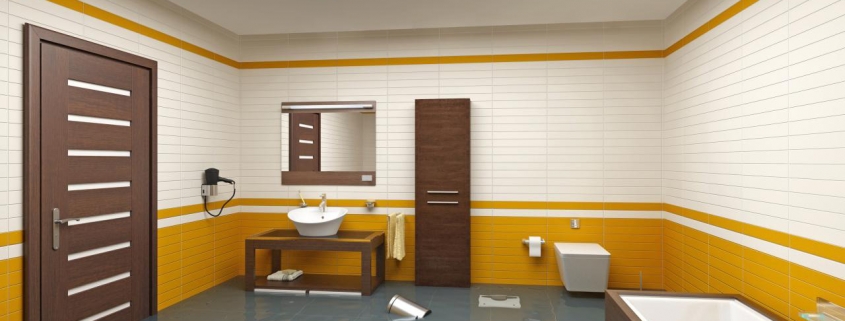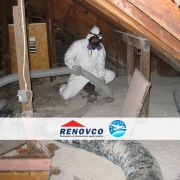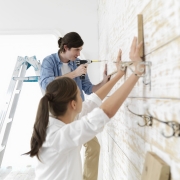Flooded Basement Restoration – Renovco Team
A flood may happen at any time. A flooded basement can be a disaster. It may be caused by all sorts of things. This includes a broken sump pump, storm sewer backup, a burst washing machine hose, or even a failed water heater tank. Undepending by causes when a flooded basement happens, are some essential steps that a homeowner can take to begin the flood cleanup process.
Time and the forces of nature together continuously bear down on your home that was built and designed to never have a flooding, musty, or a damp basement. If you hire professionals than basement flooding is a problem that can be solved quickly. Basements can flood from almost any point including floor, walls, pipes, windows, and hatchway entrances. Most flooded basements are caused by heavy rains, groundwater flooding, or home plumbing failures.
You must bear in mind that, if flood water inside your home is pumped out promptly, your walls, as well as your carpet, flooring, ceiling, and personal property can quickly become damaged. This helps to create an unsafe environment of breeding bacteria, mold growth, and rotting wood. The flooded basement restoration process has two primary phases: flood water removal and flooded basement cleanup, which includes the drying process.
REMOVE THE FLOOD WATER
If your flooded basement has a relatively small amount of water, you may be able to mitigate some of the flood damage by beginning the drying process on your own. Try to remove as much flood water as possible with wet-dry vacuums and pumps. In cases where you don’t own water removal equipment, you can typically rent a pump from a tool rental store.
After water removal, we recommend to dry out the affected area with fans and dehumidifiers to prevent mold and mildew from forming. Also recommended to open doors and windows to help maximize air circulation.
Don’t forget, water removal is just the primary step. But in several cases, simply drying techniques are not enough when removing water after a flood. The approach you take to water damage restoration is depending on the types of rooms and belongings affected.
CLEAN UP YOUR FLOODED BASEMENT
After the water removal, it’s time to clean up your flooded basement. Things like carpets, walls, and floor coverings are porous which means a basic cleaning will not suffice and more extensive disinfection, deodorizing, and flood restoration are required. You know that surface cleaning only removes visible contamination. For this reason, all surfaces affected by water damage must be thoroughly cleaned. After that, you can disinfect and deodorize all the areas in order to properly eliminate mold, bacteria, fungi, and other viruses.
Everything that came into contact with the floodwater must be cleaned. You don’t need to purchase anything special. A diluted bleach solution can work for this as well. For large areas, you can use a garden spray pump or a similar tool. Let everything air dry.
DISINFECT THE FLOODED BASEMENT AREA
Several homeowners are tempted to quickly move past the flood damage and jump straight into rebuilding. But they have to know that rushing through the flood cleanup process before everything fully dries usually leads to problems. Though time-consuming, it is imperative that you disinfect every surface in order to prevent mold and mildew. It can take as long as two weeks or more for unseen moisture to fully evaporate.
If you’re feeling overwhelmed by the water floodwater restoration process, call a professional water cleanup service like Renovco, to begin the water cleanup and drying process with professional-grade drying and dehumidifying equipment.
WAYS TO PREVENT A FLOODED BASEMENT
Flooding is not only costly to homeowners but can also cause significant damage to your home’s construction- not to mention the potentially unhealthy environment water damage can cause. Our professional team at Renovco offers you simple tips to help you to stay flood-free and avoid a potential plumbing emergency. Follow these helpful steps to prevent a flooded basement:
-
SUMP PUMP MAINTENANCE
Your home’s sump pump is the essential component in the event of a flooded basement situation. Sump pumps are often located in basements and crawlspaces. This critical piece of equipment pumps water away from your basement and into nearby storm drains.
-
GUTTERS AND DOWNSPOUTS
The exterior of the house is just as important when taking preventative steps to avoid a flooded basement. The gutters and downspouts outside the house direct rainwater and melting the snow away from the foundation of your home and basement. Keeping your gutters clean and clear of leaves and debris will ensure that there is nothing blocking the water flow.
CALL PROFESSIONALS
For more helpful tips on house flooded basement prevention or restoration contact our Renovco Professional Team. We are experienced at getting your property back to normal as quickly as possible. We also are available when you need service most.
So, feel free to call us at 613-727-7070.





 Asbestos Remediation Inside a Building
Asbestos Remediation Inside a Building




